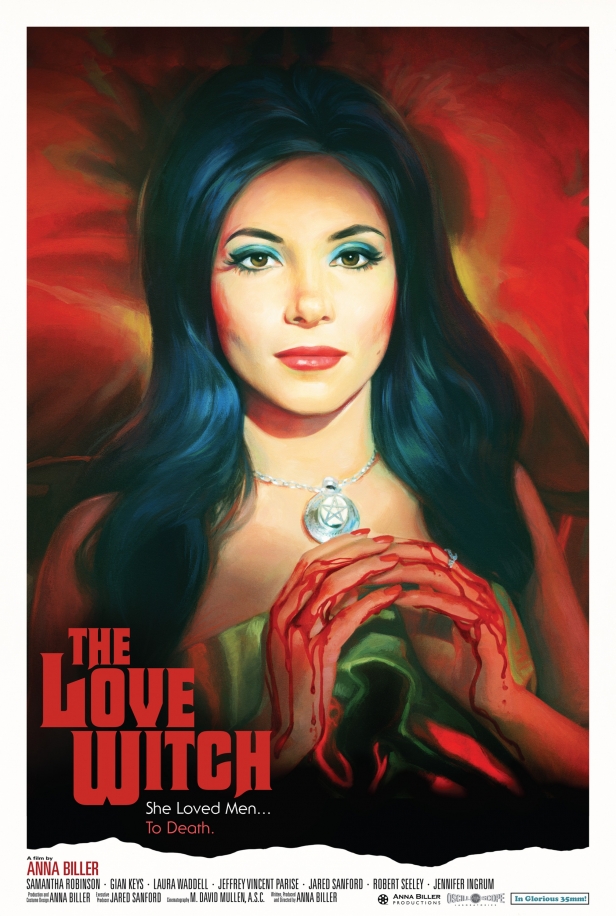

Growing up with an artist mom and musician dad, her interest in artistic creativity as a generative force was “in my blood,” she said. But she has long been spinning a witchy web of creative kin-quite literally. Grossman started the podcast because she wanted to highlight cultural producers who operate outside of the confines of tradition. Guests so far have ranged from tarot reader and intuitive counselor Lindsay Mack to dominatrix Dia Dynasty digital mystic Bri Luna of The Hoodwitch to photographer Shannon Taggart, who captures mediums and the ghosts with whom they commune. Her latest exploration of this connection comes in the form of a podcast, The Witch Wave, which she launched in October 2017 and features a wide array of artists, writers, astrologists and myriad another folk who have crafted careers for themselves out of a dedication to their craft. “I think they might be the same thing,” she said.

The link between creativity and magic is precisely what Grossman wants to make explicit. Maybe you do that through a spell, or maybe you do it by painting, writing, or performing. For Grossman-an independent writer, curator, occult historian and practicing witch-magic is the process of simply envisioning something and manifesting it. Sure, brooms, feline sidekicks and plant-based potions may be the stereotypical wares of a witch, but that doesn’t mean you need any of them to make magic. One of her cats, Albee, was splayed out across the kitchen table, purring contentedly as we chatted the other, Remy, was watching me intently from the couch in the adjacent room. Her bookshelves were loaded with books on herbs and, in her living room, a hand-hewn broom was mounted to the wall. “There’s no one way to be a witch,” Pam Grossman explained as I sipped hot green tea out of a Salem, Massachusetts, souvenir mug in the kitchen of her cozy Park Slope apartment. Here are some lesson plans and resources teachers can use to help students explore the topic on a deeper level.Pam Grossman Sylvie Rosokoff for Sanctuary In light of this, witch hunts are a wonderful topic to bring to the classroom. The American imagination has been long fascinated by this time period, as most people are intrigued by the supernatural and the fear of the unknown. Books like the classic novel The Crucible have brought more attention to the historical events. Thirty of those accused were found guilty, and nineteen of the thirty were executed by hanging (fourteen women and five men).
Witch it art series#
The Salem witch trials consisted of a series of hearings and prosecutions of more than 200 people accused of witchcraft. In the United States, people are most familiar with the events that took place in colonial Massachusetts between February 1692 and May 1693. Witch Burning (1555) Witches Being Burned At The Stake In GermanyĪ Contemporary German Woodcut Poster Print by (24 x 36) The last witch hunt executions in Europe took place during the 1700’s, but other regions of the world such as parts of Africa and Asia have continued the practice. Most people were burned at the stake, roughly 80% of those executed were women, often over the age of 40. The prosecutions reached a highpoint from 1580 to 1630 during the Counter-Reformation and the European wars of religion that resulted in an estimated 40,000 to 50,000 executions. The era known as the classical period of witch-hunts took place during Early modern Europe and in Colonial America about 1450 to 1750. In the United States many people are somewhat familiar with the Salem witchcraft trials but are not aware that witch hunts were a global phenomenon throughout history. They also might search for evidence (Usually bogus or arbitrary evidence) to prove that the accused was practicing witchcraft. A witch-hunt (also called a witch purge) is a historical and global phenomenon, whereby authorities have searched for people who have been accused of being witches. In light of the recent celebration of Halloween we decided to do an article surrounding witch hunts that have taken place throughout history.
Witch it art archive#
Lithograph of witch trial in Salem, Massachusetts. Photograph: Bettmann Archive Published in 'A Pictorial History of the United States', 1845. An illustration showing a woman executed by hanging, for the practice of witchcraft, 1692.


 0 kommentar(er)
0 kommentar(er)
